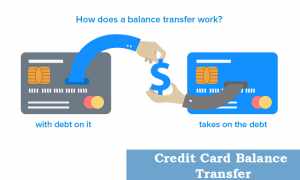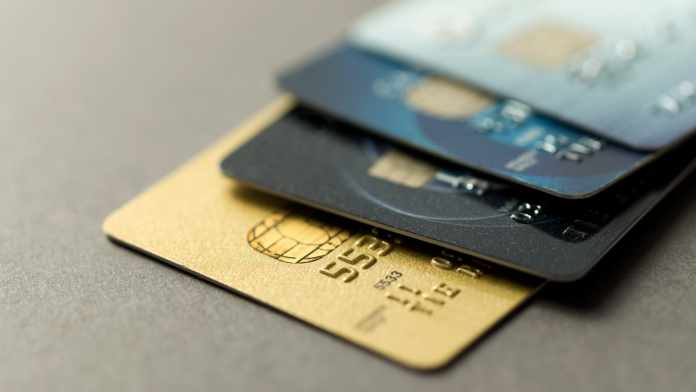Table of Contents
A balance transfer is a popular, reliable, and effective money-saving procedure. It involves legally transferring the money owed from one account to another (transferring credit card debt from one service provider to another). Many banks and financial companies offer a balance transfer credit card. It is an excellent option for customers who are currently paying a higher interest rate. The new service provider ensures flexible and reasonable prices, reduced rates for an initial period, and so on.

Consumers have a large number of options in the financial marketplace. But they rush towards the most lucrative financial instrument. It is a rookie mistake as selecting the right kind of credit card is of vital importance. Else, the financial burden grows, and the credit scores also become unstable and deficient, no matter how many balance transfer credit card companies you switch. Rely on the following criteria to make a well-informed decision:
Introductory prices
The balance transfer credit card offered by many companies has low-interest rates. They even offer a 0% introductory price for moving the balance amount. Yes, this deal looks very desirable as the monthly charges come down. The customer could avoid or reduce the financial burden for a fixed period. The nil charges also facilitate convenient and tension-free balance pay-offs on the cards.
You have to select a bank or company that offers a 0% rate for the transferred amount. However, a very low-interest rate of about 2.99% is also a welcoming option. Some card offerings even go as low as 1.5% on the monthly fees. It is best to be careful and perform a thorough price comparison while choosing a reliable creditor and not blindly pick the first 0% card you find.
Offer duration of the balance transfer credit card
The initial offering of a 0% interest rate is only promotional. Naturally, it will be available only for a limited period. In most cases, this no-interest period stretches up to six months. But a few companies extend this limit up to 18 or even 21 months. The customers get more time to re-arrange their finances to pay off the balance without any interest.

However, the grace or honeymoon period has both pros and cons. If you fail to pay the minimum balance on time, then there will be penalties. Some creditors also modify the rates as per their regulations. You will incur higher interest rates and might forego many facilities until you pay off the amount.
You might be in a position where you can quickly pay off the amount in a couple of months. Yet, it is imperative to check the terms and conditions related to what happens when you fail to pay. You should not end up in deeper debt than before.
The card will have positive benefits if you keep up the promise. Those who pay on time will become eligible for the rewards program. They earn valuable cash back opportunities or points for active card usage.
The balance transfer credit card fees
Customers who transfer the balance cannot avoid the service charges. You will have to pay a minimum fixed fee. You will incur a fee between 3% and 5% of the transferred amount in some cases.
But this fee is usually negligible compared to the amount of money you would be saving by avoiding interest payments for a couple of months. Learn whether the dynamic fee or the fixed fee is right for you.
Purchasing flexibility is significant
The best balance transfer credit card also facilitates purchases. Consumers do not open a new account to pay off old balances. They also need to make fresh purchases using the introductory rates of interest. Thankfully, many companies offer promotional rates for purchases as well.

Such attractive offerings also come with a catch. The rates may still work against the customer’s expectations. Some card owners spend recklessly and rake up new charges. If so, you will then have to manage minimum monthly payments or face surprising interest rates. Thankfully, problems arise only for higher interest rate balances and not the lower interest ones.
How is the regular interest rate?
One key criterion for choosing a card is the annual percentage rate or APR. It is the actual annual costs after the 0% period. Since the promotional interest rates are for a limited time, they will expire. Subsequently, the new interest rates will come into the picture.
Not every company or bank offers the same regular and introductory rates. A new card with a regular fee higher than the current card rates is not desirable, even with a 0% rate and a more extended introductory period. So, look closely at the terms, conditions, details, and fine print of the agreement as the creditors do not inform the customer about the transition to regular APR while marketing.
The balance transfer credit card eligibility
Unfortunately, not everyone who applies gets a new transfer card. The banks and creditors approve customers in bulk during the initial stages. But they cannot accommodate all the applicants as it is neither feasible nor profitable. So, they have to sift, sieve, filter, and apply qualifying terms.
Your chances of earning a new balance transfer account depend on two criteria. They are credit history and current income status. Those who have a positive credit history and adequate, steady income are more eligible. The banks also have internal policies, and they apply different rules for high or low-interest customers.
Look for time limitations
The balance transfer transaction has a deadline. The customer has to move the balance from the old account to the new one within 60 days of opening the new account. Or he may get disqualified from receiving the promotional offer of 0% or low-interest rates. However, some creditors do not impose conditions on upfront transfers.

Finally, the banking or credit card company is a crucial criterion. You cannot open a second account with the same creditor. The rules and banking regulations prevent such balance transfers. But you can always approach a new company for lower interest rates. Just make sure you can pay off the balance within the specified time limits. Also, avoid late payments, bounced checks, curb expenses, and purchases beyond the credit limit.









